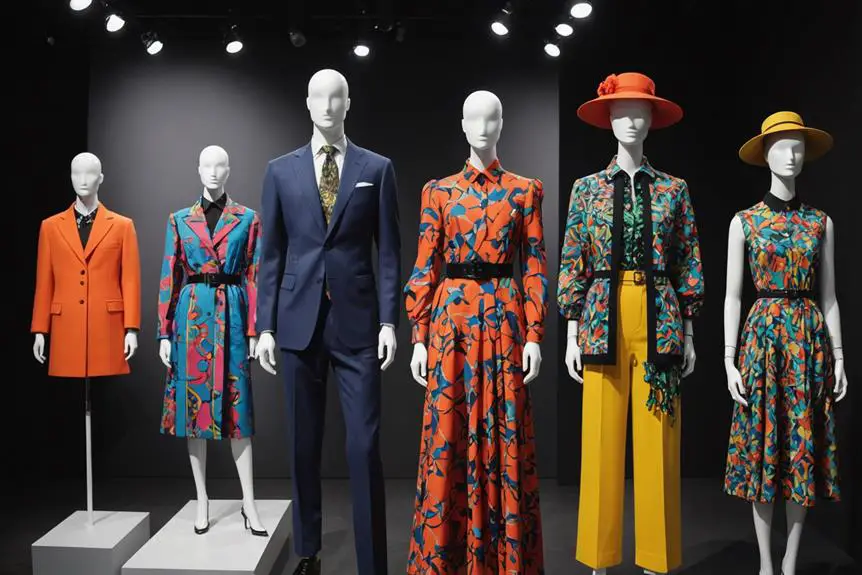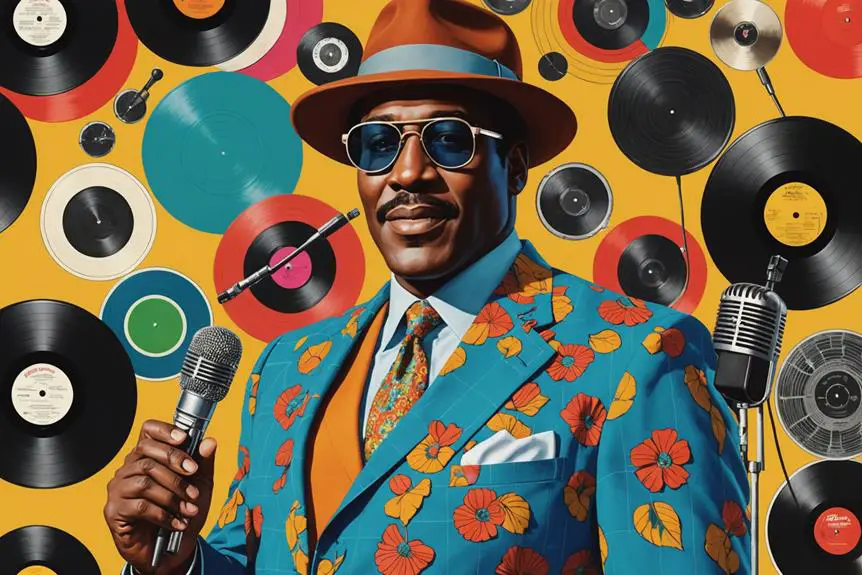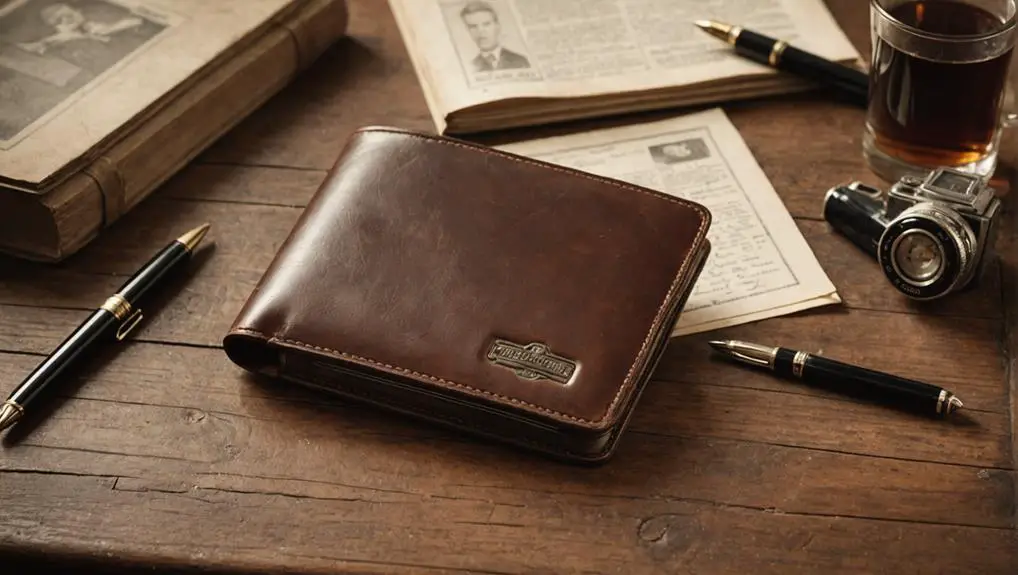When you think about "Fashion Police," it's hard not to recall the standout outfits that sparked both admiration and controversy. From Giuliana Rancic's daring black slit dress to Jordin Sparks' eye-catching print, each look stirred conversations about style and taste. The show's unique segments, like "Bitch Stole My Look," offered a platform for viewers to engage with fashion in a fresh way. But have you ever considered how these outfits not only shaped celebrity culture but also influenced broader fashion trends? The implications go beyond mere aesthetics, revealing a deeper narrative worth exploring.
Show Overview
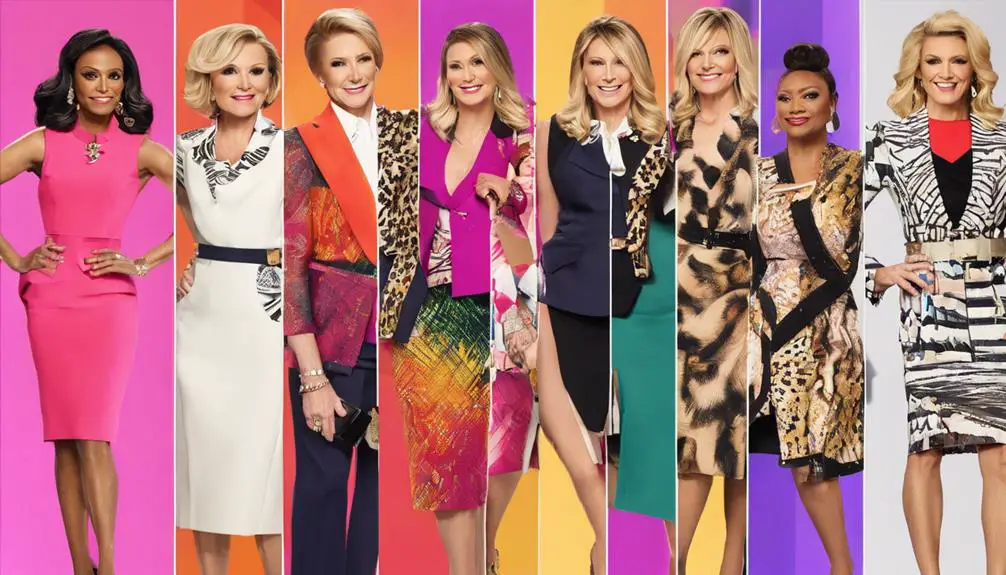
Since its premiere on the E! network, "Fashion Police" has captivated audiences with its sharp critiques of celebrity fashion. The show quickly became a cultural phenomenon, blending humor and style analysis under the guidance of various Fashion Police hosts. Joan Rivers, the original host, set a high standard with her witty observations and fearless commentary, establishing a legacy that resonated with viewers. After her passing, co-hosts like Kathy Griffin and Melissa Rivers stepped in, each bringing their unique flair to the show while maintaining its edgy spirit.
Throughout its run, "Fashion Police" offered segments like "The Five Must-See Looks of the Week" and "Bitch Stole My Look," which showcased standout outfits and compared similar styles worn by different celebrities. These segments not only entertained but also sparked conversations about fashion choices and trends, influencing how viewers perceive celebrity style. Despite facing controversies, including accusations regarding its handling of sensitive topics and California labor laws, the show left an indelible mark on the fashion commentary landscape.
Even after airing its series finale on November 27, 2017, "Fashion Police" remains a significant part of E!'s legacy. Its mix of fierce critiques and entertaining segments continues to inspire fashion discussions in popular culture. So, whether you loved or loathed the outfits featured, you can't deny that the show played a pivotal role in shaping how we talk about celebrity fashion today.
Iconic Outfits Featured
"Fashion Police" has showcased an array of iconic outfits that have left a lasting impression on viewers. One of the standout moments featured Giuliana Rancic in her stunning Black Slit Dress on May 28, 2016. This bold choice highlighted her fearless approach to fashion, making waves among fans and critics alike. Rancic's ability to mix elegance with daring elements is a reflection of her style prowess.
On February 4, 2014, Rancic wore a Sheer Detail Top that exemplified the show's focus on standout celebrity outfits. The sheer fabrics and intricate detailing caught the eye, proving that subtlety can make a significant impact. On the same day, her vibrant Orange Dress took the spotlight, showcasing her knack for choosing colors that pop and command attention.
Another memorable design was the Origami Dress presented on September 11, 2013. This unique piece showcased architectural folds that captivated the audience and highlighted the innovative spirit of contemporary fashion. Additionally, Jordin Sparks made an impression with her Black and White Print Dress with Pink Trim on May 20, 2013. This outfit reflected the show's engagement with diverse fashion statements, illustrating that style comes in many forms.
These iconic outfits not only defined moments on "Fashion Police" but also influenced trends, inspiring viewers to embrace their own bold fashion choices. Whether through Rancic's daring ensembles or Sparks' playful prints, the show consistently celebrated the art of fashion.
Memorable Segments
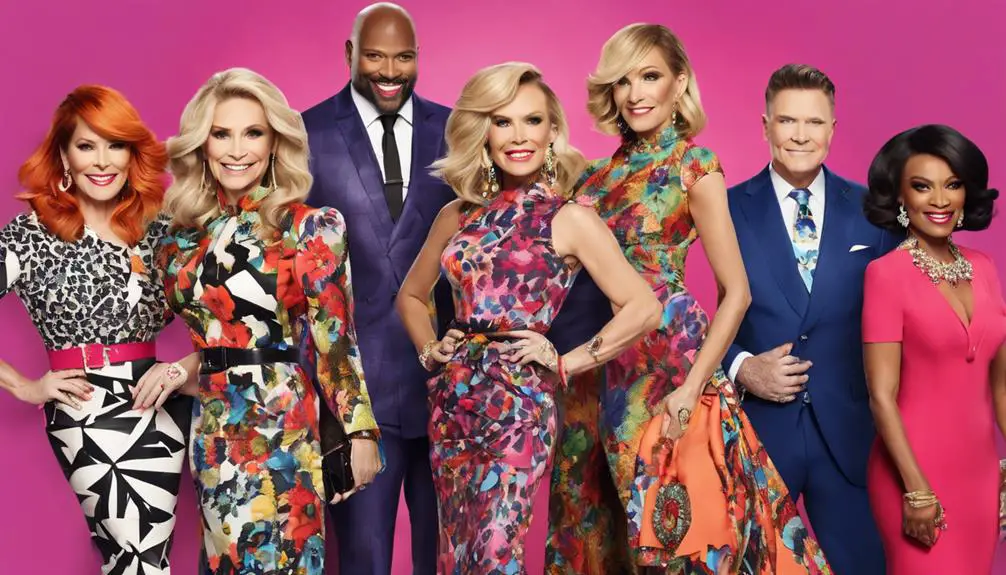
Each episode of "Fashion Police" not only showcased iconic outfits but also featured memorable segments that kept viewers engaged and entertained. One of the standout moments is "The Five Must-See Looks of the Week," where Giuliana and her co-hosts celebrate the best fashion highlights from the red carpet. This segment dives deep into the most stunning celebrity ensembles, making sure you know which looks to emulate.
Then, there's the hilarious "Bitch Stole My Look," where hosts compare similar outfits worn by different stars. This often leads to humorous debates about who wore it best, sparking lively discussions and laughter as viewers weigh in on their favorites. It's a fun way to dissect celebrity fashion, showcasing the sometimes quirky world of style.
The "Gotta Have It! / Make It Stop!" segment is another fan favorite, discussing current trends and offering insights into what's hot or not in the celebrity world. Giuliana's sharp commentary here provides a fascinating look into evolving fashion norms.
Don't forget the interactive "Starlet or Streetwalker" game, where you guess celebrity identities from obscured photos, engaging viewers in a unique way. Finally, the "360 Degree Glam Cam" delivers a complete view of fashion statements, allowing you to appreciate every detail of those stunning outfits.
These segments combine humor, style, and interactivity, making "Fashion Police" a must-watch for anyone interested in the world of fashion.
Co-Hosts and Their Styles
The vibrant world of "Fashion Police" comes alive through its diverse co-hosts, each bringing their own unique flair and personality to the show. One of the standout figures is Giuliana Rancic, who consistently showcased a variety of iconic outfits that captured the essence of contemporary fashion. For instance, her stunning black slit dress on May 28, 2016, highlighted her fashion-forward style, making her a trendsetter in her own right. The show's cultural relevance can be compared to that of luxury brands like Gucci's brand history, which has shaped fashion trends over decades.
Another memorable co-host was Kelly Osbourne, known for her bold fashion choices and distinctive hair colors. Although she faced backlash for controversial comments, her style remained a significant talking point during her time on the show until she left in February 2015. Joan Rivers, the original host, set the tone with her excessive makeup and sharp humor, influencing how the panel critiqued celebrity fashion and adding a layer of theatricality to the show.
Kathy Griffin joined the cast in December 2014, offering a fresh dynamic and perspective before departing due to creative differences in March 2015. Melissa Rivers and Margaret Cho later joined the panel, each contributing their unique fashion sensibilities and insights. These co-hosts combined their distinctive styles and personalities, creating a vibrant tapestry of fashion commentary that made "Fashion Police" a cultural phenomenon. Ultimately, each co-host left their mark, contributing to a rich discussion about style that continues to resonate with audiences today.
Controversies and Critiques
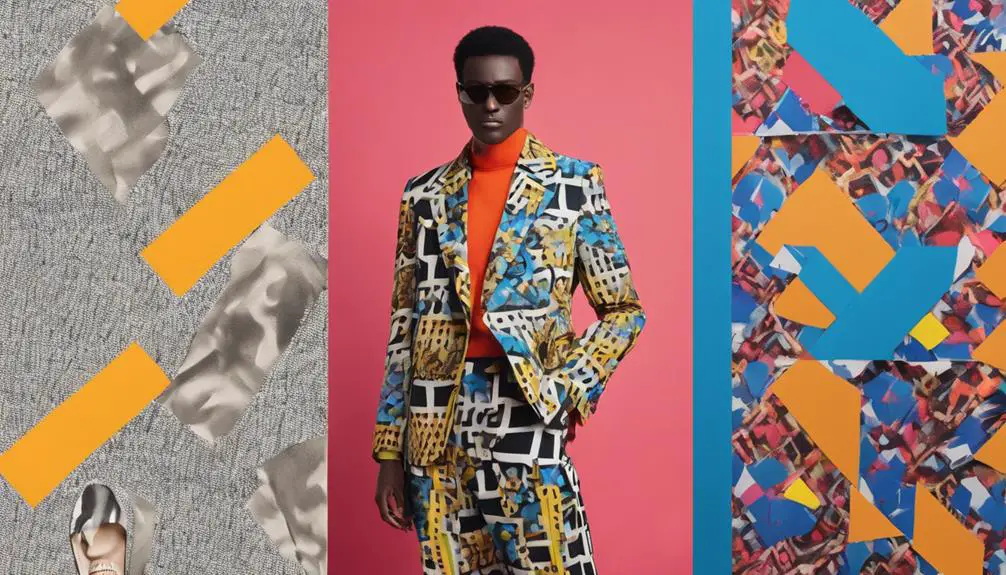
Controversies have always surrounded "Fashion Police," often igniting fierce debates among viewers and critics alike. One notable incident occurred at the 87th Academy Awards, when Kelly Osbourne made controversial comments about Zendaya's hair. This backlash ultimately led to Osbourne's departure in 2015, highlighting how sensitive fashion discussions can be. The show also faced serious issues behind the scenes in 2013, when writers alleged that E! violated California labor laws, filing complaints for $1 million in unpaid wages and overtime. This scandal prompted public criticism and raised questions about the network's treatment of its talent.
Furthermore, in March 2015, "Fashion Police" announced a temporary halt for revamping, which indicated a need for change in response to viewer feedback. Joan Rivers, a legendary figure in the fashion critique space, faced criticism herself for her outdated humor and heavy makeup. Her style, although iconic, sometimes seemed at odds with the evolving standards of fashion. The show struggled to maintain its relevance amid shifting cultural expectations.
Audience reactions were mixed; while some viewers loved the show's fierce critiques, others felt shame in watching due to the negativity and personal attacks that often accompanied the discussions. As the show aimed to balance humor and critique, the controversies surrounding it serve as a reminder of the fine line between fashion commentary and personal offense. Ultimately, "Fashion Police" remains a fascinating case study of how fashion, humor, and public perception intertwine in the world of entertainment.
Audience Reception
Viewer reactions to "Fashion Police" reveal a complex landscape of opinions, highlighting the show's polarizing nature. On one hand, many viewers enjoyed the entertaining critiques offered by the panel, appreciating the sharp wit and style insights from the fashion stylists. They found joy in seeing celebrities scrutinized and discussed in a way that few other shows dared to do, turning the red carpet into a platform for lively debate about fashion choices.
However, this enjoyment often came with a caveat. Some viewers expressed feelings of shame for watching, particularly due to the harshness of the critiques, which sometimes crossed a line into personal attacks on celebrities' appearances. Complaints flooded in about the panel's comments, with many viewers arguing they felt uncomfortable with the negative tone that sometimes overshadowed the fashion discussions.
Despite these criticisms, a loyal fanbase stood firm, embracing the opportunity to engage with fashion in a unique way. They recognized that the "bitchy" critiques were part of the commentary culture viewers had come to expect from the show, even if they sometimes seemed excessive. Additionally, many voiced disappointment over the repetitive nature of Joan Rivers' humor, labeling it as vulgar and outdated, which affected their overall enjoyment.
In essence, the audience's reception of "Fashion Police" illustrates a vibrant blend of admiration and critique, showcasing how the show has sparked crucial conversations about fashion and celebrity culture in an exciting, albeit divisive, manner.
Fashion Trends Highlighted
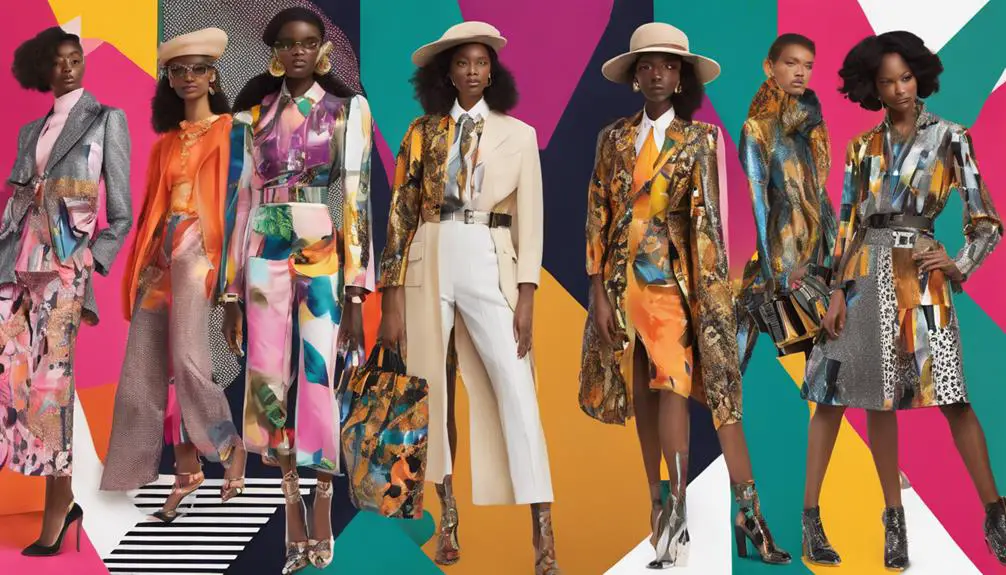
Within the vibrant world of "Fashion Police," fashion trends took center stage, enchanting audiences with the latest celebrity styles. Each episode brought you segments like "The Five Must-See Looks of the Week," showcasing standout outfits that defined contemporary fashion. You couldn't help but admire the bold choices of celebrities, from Kelly Osbourne's stunning ensembles to Giuliana Rancic's iconic Black Slit Dress and the innovative Origami Dress, which pushed the boundaries of design.
The show's "Bitch Stole My Look" segment cleverly compared similar outfits worn by different celebrities, sparking debates about who wore it better and highlighting recurring styles within the industry. You might find yourself inspired by how skin tone plays a significant role in these choices—certain colors can elevate a look, making it pop against various complexions.
In addition, the "Gotta Have It! / Make It Stop!" segments kept you informed about emerging fashion trends, shaping your preferences and perceptions of style. The use of the rotating "360 Degree Glam Cam" added a unique twist, allowing you to appreciate the intricate details of celebrity outfits—fit, color, and texture were all expertly highlighted.
As you followed along, it became evident that "Fashion Police" not only entertained but also educated viewers about the ever-evolving world of fashion, ensuring you stayed in the loop with trends that mattered.
Legacy and Impact
"Fashion Police" didn't just spotlight trends; it reshaped how we engage with celebrity fashion commentary. Since its premiere on E! in 2010, the show carved out a unique niche in popular culture. You might remember its catchy segments that became staples in fashion critique media:
- "The Five Must-See Looks of the Week"
- "Bitch Stole My Look"
- Celebrity spotlights that ignited discussions across social media
Even after the passing of Joan Rivers in 2014, the show struggled yet continued to influence how we perceive celebrity fashion. It faced various controversies, revealing the complexities of celebrity culture and sparking conversations about body image and diversity. This shifting landscape made it clear that societal attitudes were evolving, and "Fashion Police" was at the forefront of these discussions.
Despite its ups and downs, the show's legacy remains significant. It brought fashion commentary to the forefront, emphasizing the intersection of style, celebrity, and public perception. You can't overlook how it impacted the entertainment industry, encouraging viewers to engage with fashion in a more critical and informed way.
In a time when fashion is more than just clothing, but a form of expression and identity, "Fashion Police" opened the door for a new generation of critics and fans alike. Its influence continues to resonate, reminding us that fashion is as much about who we are as what we wear.
Frequently Asked Questions
What Happened to the Show Fashion Police?
You'll find that Fashion Police faced numerous controversies and lineup changes over the years, leading to its end in 2017. Its cultural impact, however, still influences celebrity fashion commentary and discussions today.
What Does It Mean to Call the Fashion Police?
To call the fashion police means you're critiquing someone's style choices, often with humor and sharp commentary. You're engaging in fashion critique, discussing trends and standout outfits, and sharing your opinions with others.
How Long Is Fashion Police?
When you ask how long a show lasts, consider its format. "Fashion Police" initially ran for half an hour, later expanding to an hour for extensive outfit analysis and critiques, engaging viewers every week.
